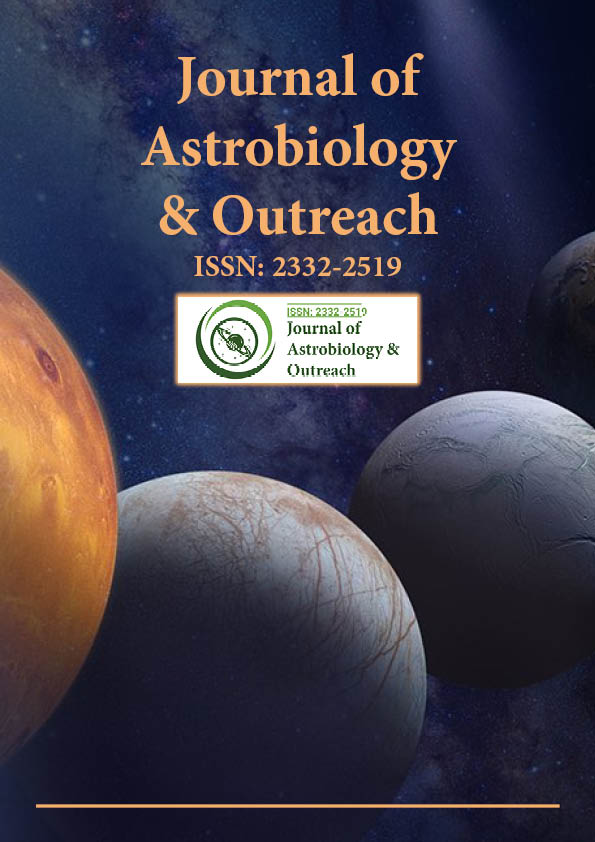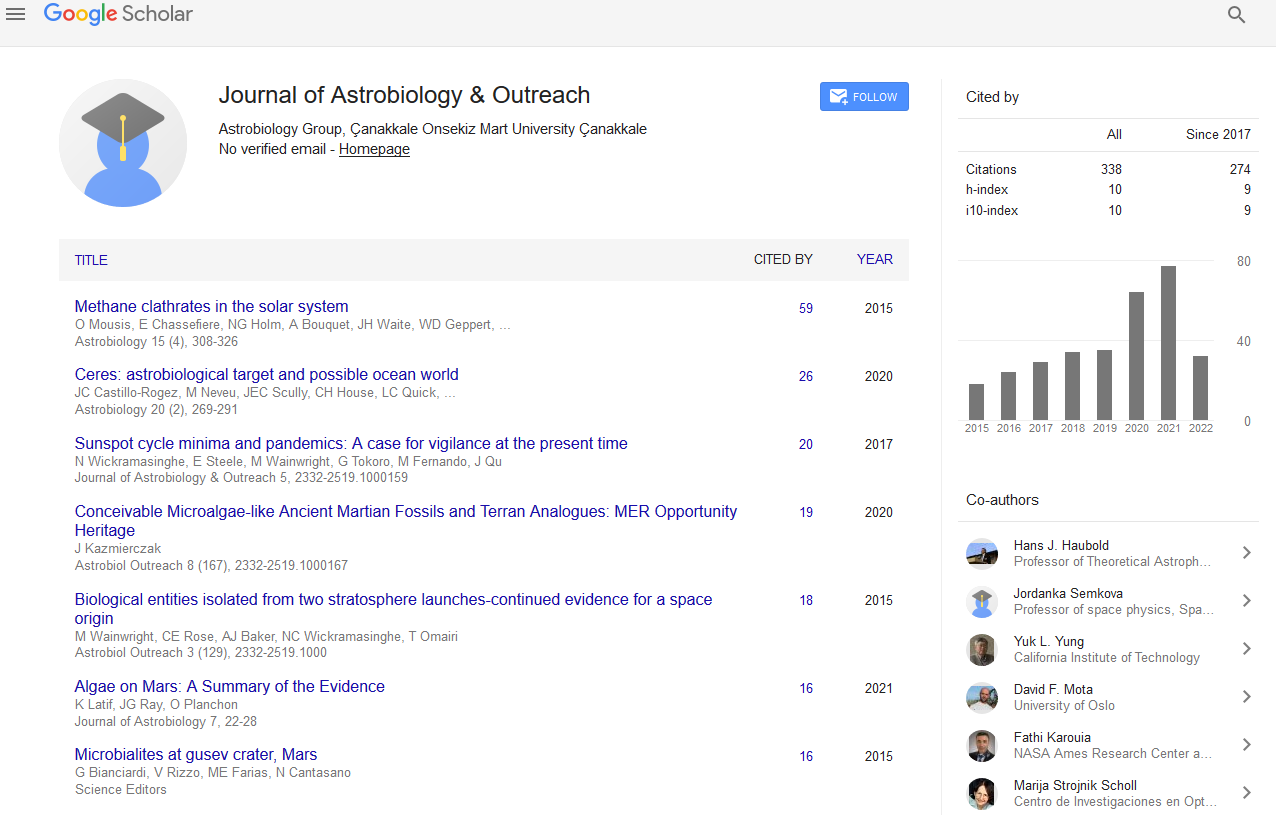Indexed In
- Open J Gate
- Academic Keys
- JournalTOCs
- RefSeek
- Hamdard University
- EBSCO A-Z
- OCLC- WorldCat
- Google Scholar
Useful Links
Share This Page
Journal Flyer

Open Access Journals
- Agri and Aquaculture
- Biochemistry
- Bioinformatics & Systems Biology
- Business & Management
- Chemistry
- Clinical Sciences
- Engineering
- Food & Nutrition
- General Science
- Genetics & Molecular Biology
- Immunology & Microbiology
- Medical Sciences
- Neuroscience & Psychology
- Nursing & Health Care
- Pharmaceutical Sciences
Perspective - (2022) Volume 10, Issue 2
An Overview on Refracting Telescopes
Mark Sehten*Received: 25-Feb-2022, Manuscript No. JAO-2022-16055; Editor assigned: 01-Mar-2022, Pre QC No. JAO-2022-16055(PQ); Reviewed: 15-Mar-2022, QC No. JAO-2022-16055; Revised: 22-Mar-2022, Manuscript No. JAO-2022-16055(R); Published: 29-Mar-2022, DOI: 10.35248/2332-2519.22.10.253
Description
Telescope, is a device used to form magnified pictures of remote objects. The telescope is absolutely the most crucial investigative tool in astronomy. It gives a means of collecting and analyzing radiation from celestial objects, even those in the far reaches the universe. Commonly called refractors, telescopes of this type are usually used to examine the Moon, different objects of the solar system which include Jupiter and Mars, and binary stars. The name refractor is derived from the term refraction, which is the bending of light while it passes from one medium to any other of different densities like from air to glass. The glass is known as a lens and can have one or more components. The physical form of the components can be convex, concave, or plane-parallel. In a refractor, the first lens through which light from a celestial object passes is called the objective lens. It should be stated that the light can be inverted on the focal plane. A second lens, known as the eyepiece lens, is positioned at the back of the focal plane and allows the observer to view the enlarged or magnified picture.
The diameter of the objective is known as the aperture; it generally ranges from a few centimeters for small spotting telescopes up to one meter for the largest refractor in existence. The objective, as well as the eyepiece, may also have several components. Small spotting telescopes may also include an additional lens behind the eyepiece to erect the picture so that it does not seem upside-down. When an object is viewed with a refractor, the picture might not appear sharply defined, or it can even have a predominant color in it. Such distortions, or aberrations, are sometimes introduced while lens are polished into its design form. The essential form of distortion in a refractor is chromatic aberration. Chromatic aberration may be minimized by including additives to the goal. In lens-layout technology, the coefficients of growth of various types of glass are cautiously matched to limit the aberrations that end result from temperature adjustments of the telescope at night.
Eyepieces that are used with both refractors and reflectors, have extensive types of applications and provide observers with the ability to select the magnification of their instruments. The magnification sometimes known as magnifying electricity is determined by dividing the focal length of the objective by the focal length of the eyepiece. Another crucial factor that one needs to take into consideration when attempting to view at excessive magnification is the stability of the telescope mounting. Any vibration in the mounting can also be magnified and can severely reduce the quality of the observed picture. Thus, notable care is generally taken to provide a stable platform for the telescope. This trouble must not be related to that atmospheric seeing, which may also introduce a disturbance to the picture because of fluctuating air currents in the direction of the light from a celestial or terrestrial object.
Resolving power is another crucial characteristic of a telescope. This is the ability of the instrument to differentiate genuinely among points whose angular separation is much less than the smallest angle that the observer’s eye can resolve. A vital application of resolving power is in the observation of visual binary stars. There, one star is routinely observed because it revolves around a second star. Many observatories conduct substantial visual binary observing programs and publish catalogs in their observational results.
Most refractors presently in use at observatories have equatorial mountings. The mounting describes the orientation of the physical bearings and shape that allows a telescope to be pointed at a celestial object for viewing. In the equatorial mounting, the polar axis of the telescope is constructed parallel to Earth’s axis.
Reflectors are used not only to observe the visible area of the electromagnetic spectrum but also to explore both the shorter- and longer-wavelength areas adjacent to it. The name of this kind of instrument is derived from the fact that the primary mirror reflects the light back to a focus instead of refracting it. The primary mirror normally has a concave spherical or parabolic form, and, as it reflects the light, it inverts the image on the focal plane.
Citation: Sehten M (2022) An Overview on Refracting Telescopes. Astrobiol Outreach. 10:253.
Copyright: © 2022 Sehten M. This is an open-access article distributed under the terms of the Creative Commons Attribution License, which permits unrestricted use, distribution, and reproduction in any medium, provided the original author and source are credited.unrestricted use, distribution, and reproduction in any medium provided the original author and source are credited.

